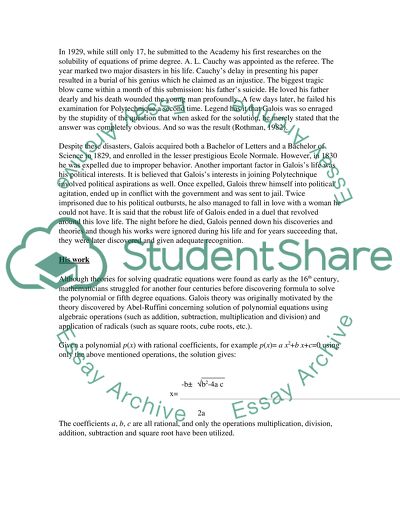History of Mathematics Essay Example | Topics and Well Written Essays - 500 words - 2. Retrieved from https://studentshare.org/miscellaneous/1545424-history-of-mathematics
History of Mathematics Essay Example | Topics and Well Written Essays - 500 Words - 2. https://studentshare.org/miscellaneous/1545424-history-of-mathematics.


